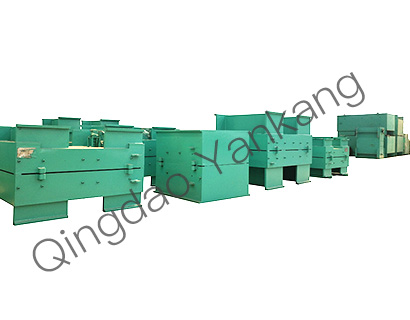In this article, we will delve into the significance of mold temperature control in blow molding machines and explore the various techniques employed to achieve optimal results.
Blow molding is a widely used manufacturing process for creating hollow plastic parts. One essential aspect of blow molding is mold temperature control. The temperature at which the mold operates plays a crucial role in the quality and consistency of the final product.
Mold temperature control refers to the regulation and maintenance of the temperature of the mold during the blow molding process. It is essential to manage mold temperature effectively because it directly affects key aspects such as part dimensions, surface appearance, mechanical properties, and overall production efficiency.
Why is mold temperature control important in blow molding?
1. Part dimensions and quality:
The temperature of the mold significantly influences the dimensions and shape of the final part. Improper temperature control can lead to variations in wall thickness, dimensional inconsistencies, and even part warping. Precise temperature control ensures uniform cooling and solidification, resulting in accurate part dimensions and superior quality.
2. Surface appearance:
Mold temperature is critical in achieving an attractive surface finish for the molded parts. Inconsistent cooling can cause surface defects like shrinkage, warpage, or uneven texture. By maintaining the optimum mold temperature, manufacturers can obtain smooth, glossy, and defect-free surfaces.
3. Mechanical properties:
The mechanical properties of blow-molded parts, including strength, rigidity, and durability, are affected by mold temperature. Improper temperature control may lead to part weakness, reduced impact resistance, or increased brittleness. By maintaining the prescribed mold temperature, manufacturers can ensure consistent mechanical properties throughout the production process.
4. Production efficiency:
Accurate mold temperature control improves production efficiency in blow molding. By minimizing cooling time, the overall cycle time can be reduced, leading to higher productivity. Additionally, consistent temperature control reduces the chances of machine downtime due to mold-related issues, thereby optimizing production throughput.

Techniques for mold temperature control in blow molding machines:
1. Water-based cooling:
Water cooling is the most common technique used for mold temperature control. Circulating water channels within the mold assembly help to dissipate heat and maintain a consistent temperature. The temperature of the circulating water can be adjusted using a chiller and controlled through a closed-loop system. Water-based cooling offers good heat transfer capabilities and is relatively cost-effective.
2. Oil-based cooling:
In some cases, oil-based temperature control is preferred over water-based systems. Oil has better heat retention properties, which can result in improved energy efficiency and temperature stability. However, oil-based systems are more expensive to install and maintain compared to water-based systems.
3. Electric heating and cooling:
Electrically controlled heating and cooling systems provide precise temperature control for molds. Electric heaters and cooling plates are integrated into the mold assembly to regulate the temperature accurately. This technique offers fast and efficient temperature control but may be more expensive upfront.
4. Insulation:
Insulating the mold can help reduce energy consumption and improve temperature stability. Insulating materials such as thermal blankets and coatings minimize heat loss, ensuring consistent temperature conditions. Proper insulation also helps to prevent ambient temperature variations from affecting the mold.
5. Mold-temperature monitoring systems:
Advanced blow molding machines are equipped with mold-temperature monitoring systems. These systems utilize sensors to continuously monitor and adjust the mold temperature as needed. Real-time feedback allows operators to make necessary adjustments to maintain optimal temperature conditions throughout the production process.
In conclusion, mold temperature control plays a vital role in the blow molding process. It directly impacts part dimensions, surface appearance, mechanical properties, and overall production efficiency. By employing techniques such as water-based or oil-based cooling, electric heating and cooling, insulation, and mold-temperature monitoring systems, manufacturers can achieve precise temperature control and produce high-quality blow-molded parts consistently.
Effective temperature control ultimately leads to improved product quality, reduced scrap rates, and enhanced productivity in the blow molding industry.
